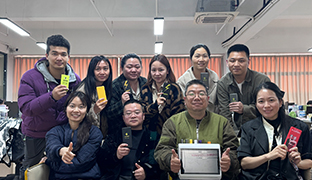After the Chinese model of shared power banks matured, the business began expanding into Southeast Asia. Driven by smartphone penetration, tourism growth, extensive offline retail networks, and digital payment adoption, the region presents significant growth potential. However, market conditions differ widely among countries in terms of payment maturity, infrastructure, consumer spending power, and operating costs. This article analyzes opportunities, challenges, and business recommendations for each country, along with implementation priorities.
I. Market Outlook
1. Singapore – High Priority (Mature Demonstration Market)
Singapore, with the highest urbanization level and consumer spending in Southeast Asia, serves as a “golden testbed” for shared power banks. Its dense business and tourist traffic ensures steady demand, while networks of convenience stores like 7-Eleven and Cheers provide extensive deployment channels. High penetration of mobile and card payments further reduces transaction friction.

2. Malaysia – Medium to High Priority (Urban + Tourism Opportunities)
Kuala Lumpur and other core cities offer strong potential. Urban crowds, nightlife, and recovering tourism create high-frequency charging needs. The growing adoption of digital wallets among urban consumers supports the replication of Singapore’s “chain network + digital payment” model.
3. Indonesia – High Priority (Population Dividend & Market Scale)
With a vast population and large smartphone user base, Indonesia is a key “potential stock.” Cities such as Jakarta and Bali, along with festivals and large events, generate concentrated charging demand. Partnerships with major payment platforms (GoPay, OVO) and retail chains (Alfamart) can accelerate commercialization and market penetration.
4. Philippines – Medium Priority (Emerging Demonstration Market)
Metro Manila and other metropolitan areas show clear demand. Local players such as Litapower prove the market’s viability. Cooperation with malls, cafés, universities, and metro stations offers feasible entry routes.
5. Thailand – Medium Priority (Tourism-Driven Market)
Demand in Thailand relies heavily on tourism. Bangkok and Phuket see high temporary charging demand from travelers. With mixed payment habits (card, e-wallet, cash), devices must support multi-payment systems. Partnering with airports, tourist attractions, night markets, and bar chains ensures targeted exposure.

6. Vietnam – Medium Priority (Fast-Growing but Evolving Payment Ecosystem)
Vietnam’s rapid smartphone adoption and thriving café culture create strong potential. As retail networks expand and digital payments mature, shared power banks can gain traction through localized operations.
7. Cambodia, Laos, Myanmar, Brunei, Timor-Leste – Low Priority (Early Observation)
These countries currently lack the infrastructure and digital ecosystem for large-scale rollouts. Pilot deployments at tourist spots, exhibitions, or temporary events can test early-stage opportunities.
II. Market Implementation Strategy
Given the region’s diversity, operators must rely on robust hardware and software integration. ZDE Core (中电核心) offers a full-stack shared power bank solution:
-
Software: Compatible with local payment systems, multi-language interfaces, and flexible pricing/promotional tools for localized management.
-
Hardware: Durable units tailored for different scenarios (desktop, standing, cabinet models) with anti-theft design and remote monitoring for security and maintenance optimization.
.png)
With such customized solutions, companies can efficiently establish end-to-end systems — from channel partnerships and device deployment to user services and operations — improving both implementation speed and profitability across varied Southeast Asian markets.




 Company and Product Information Download
Company and Product Information Download
.jpg)

.jpg)

.jpg)
.jpg)
.jpg)





